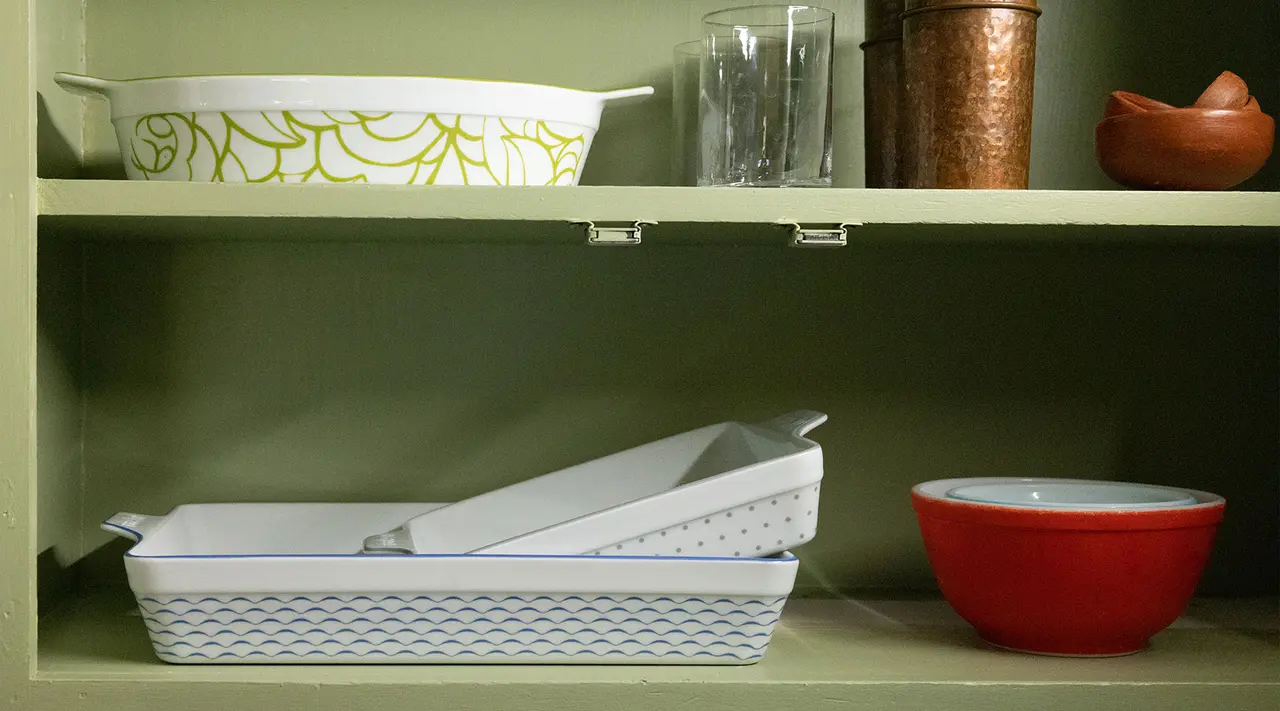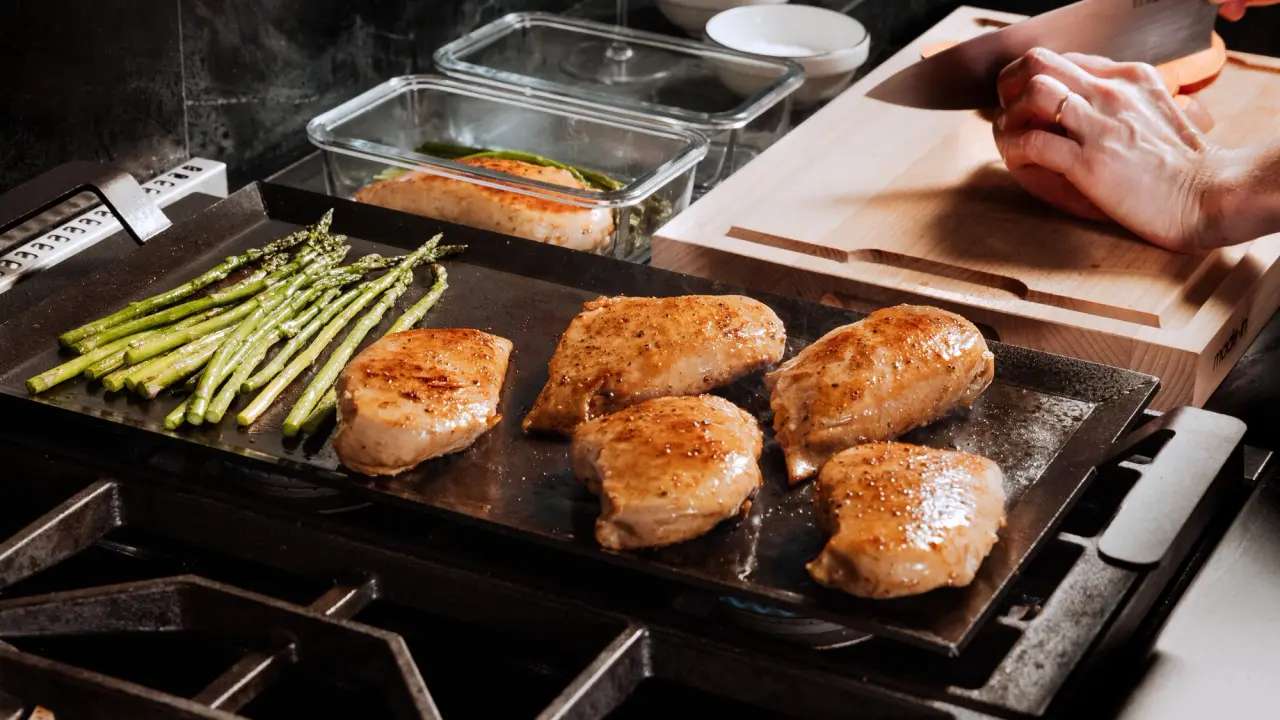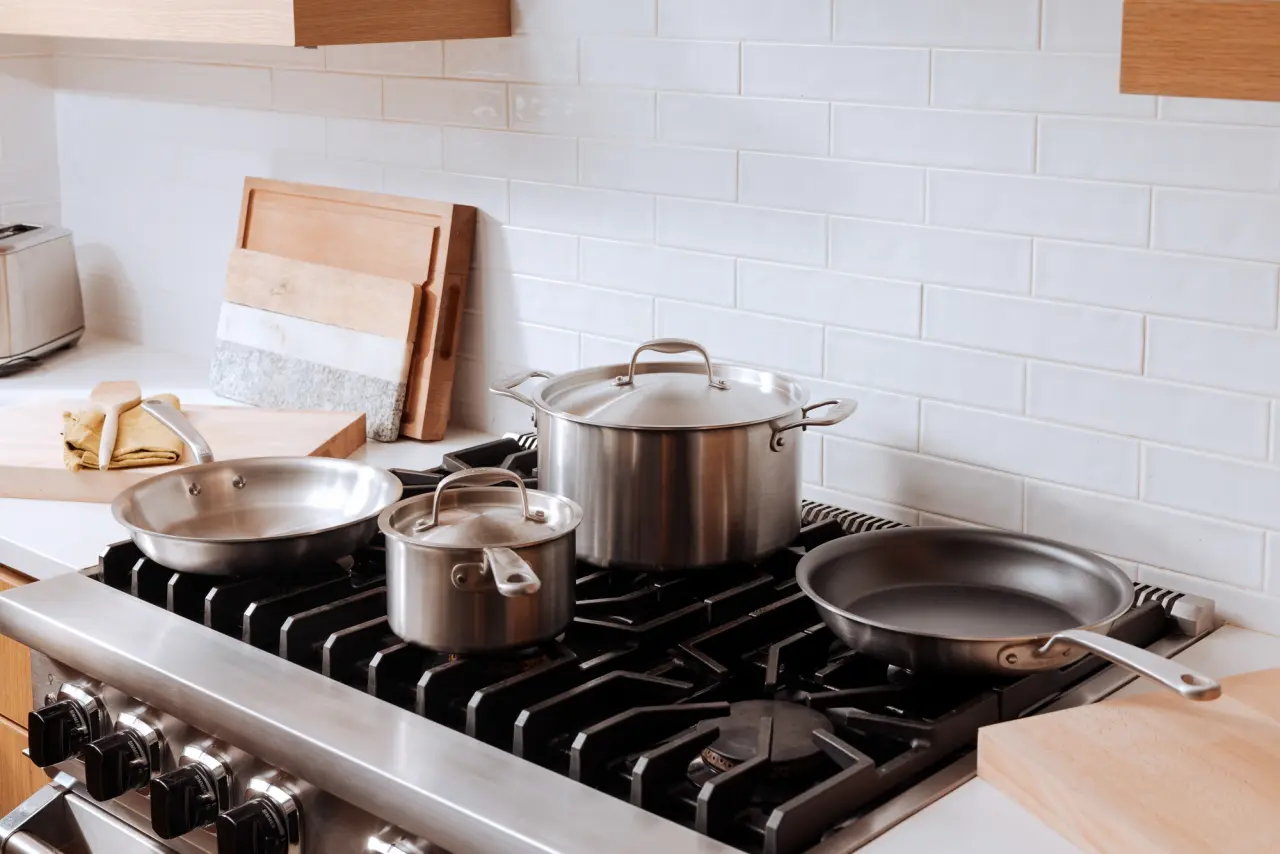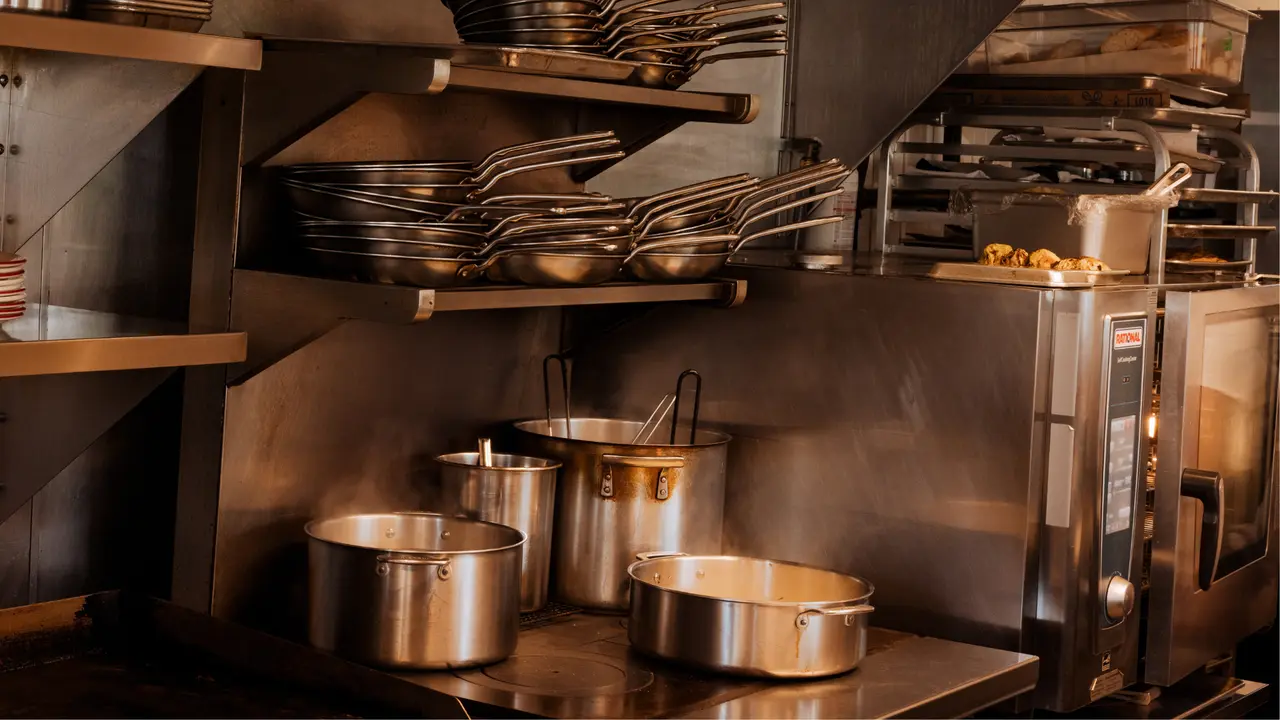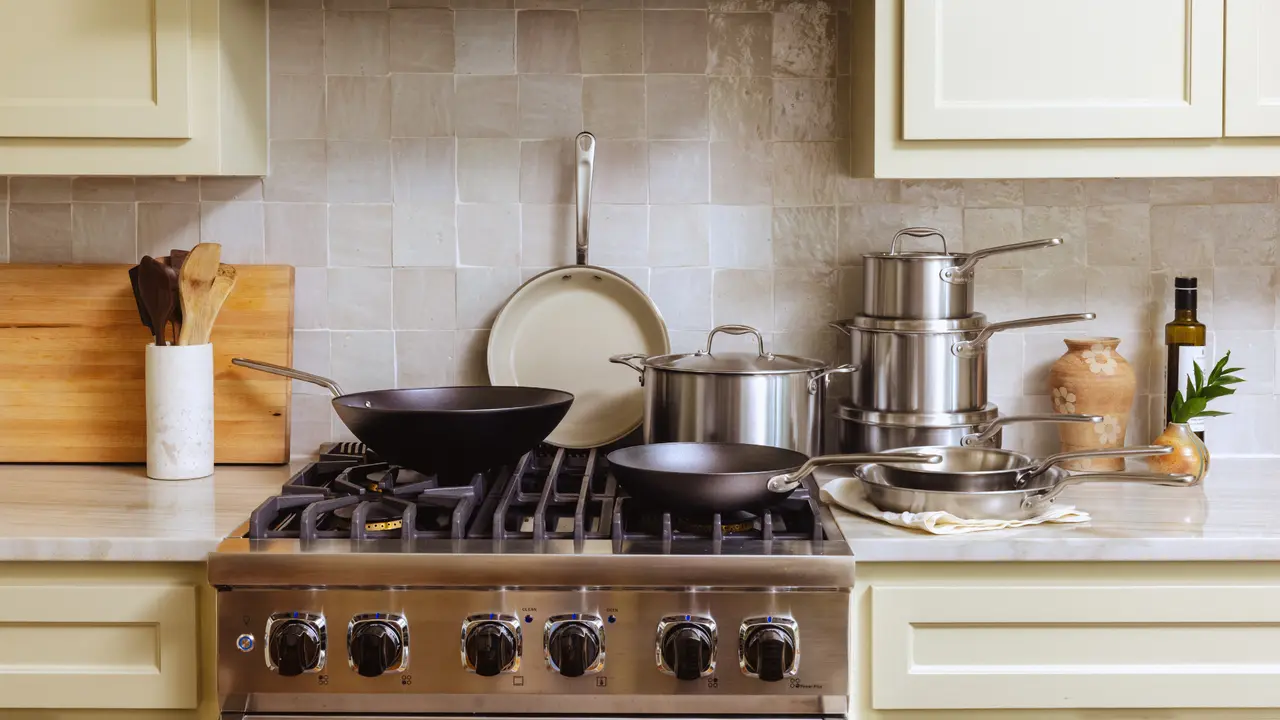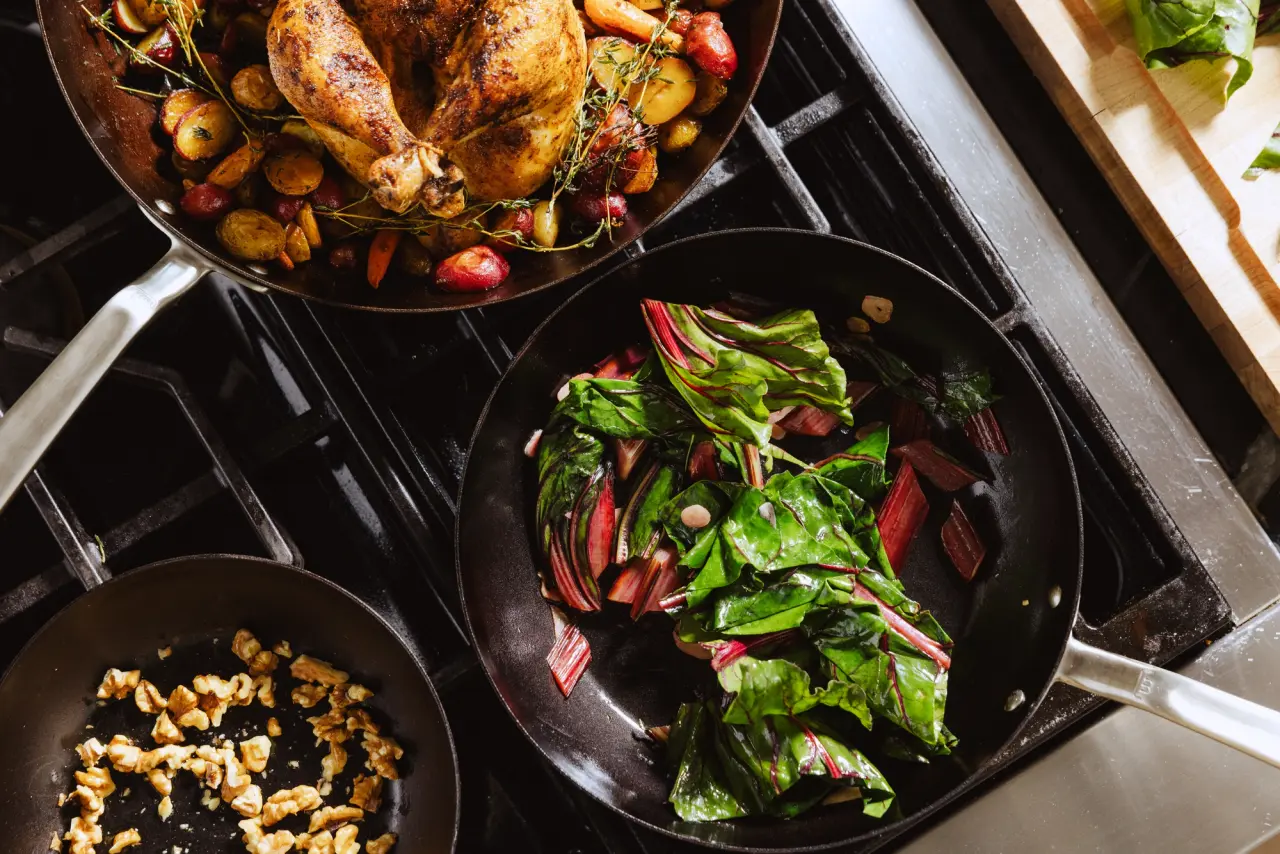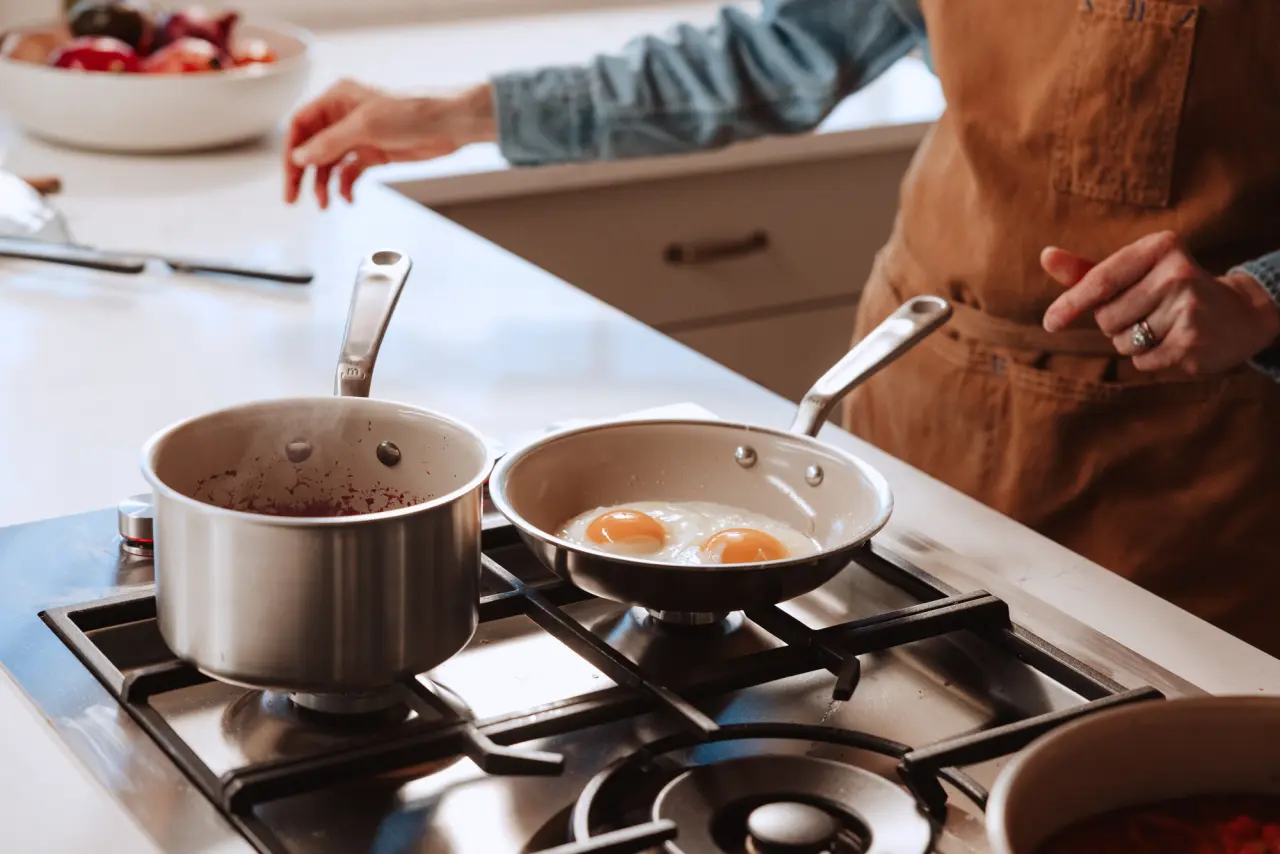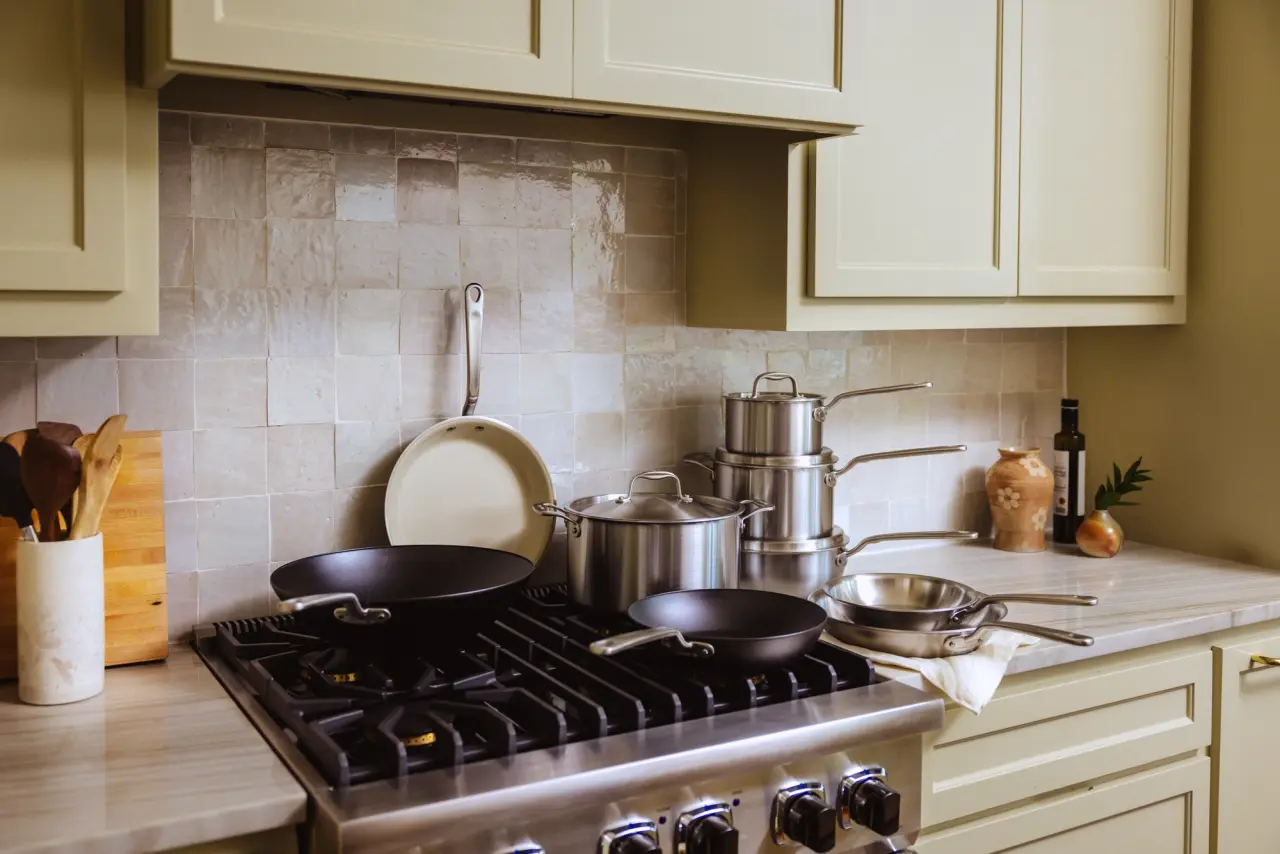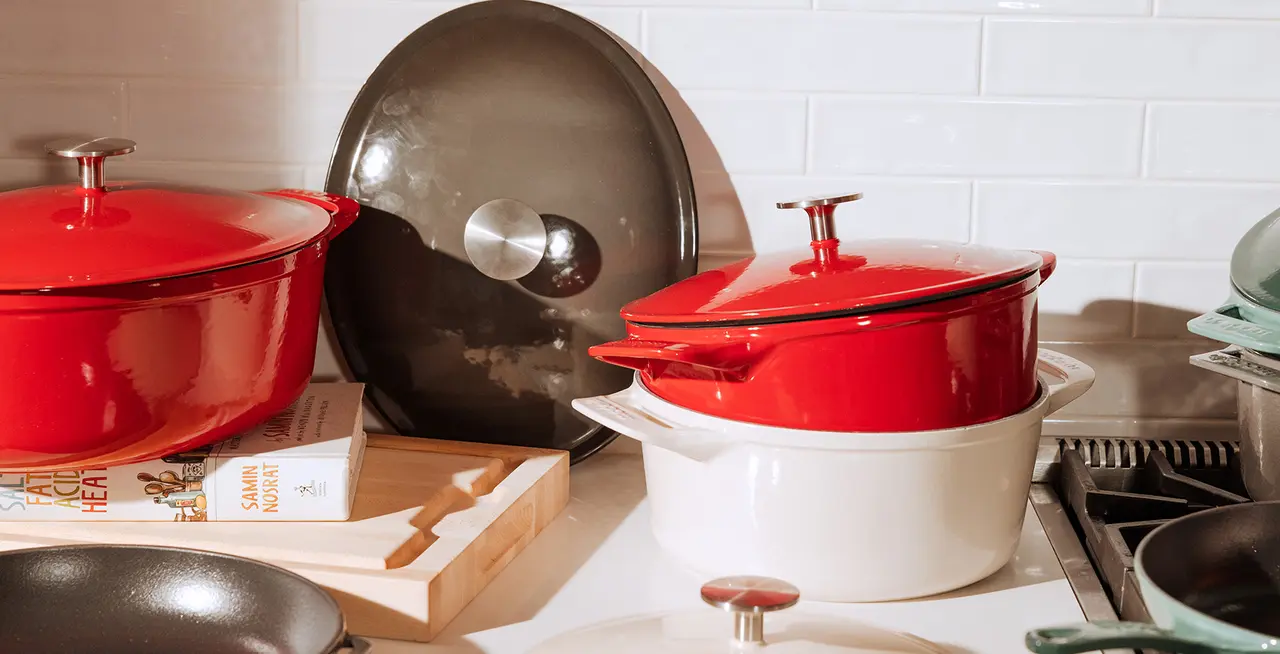Baking can be an expensive hobby, with every new recipe seeming to require some new tool or other. This is especially true for French pâtisserie, but Americans tend to have simpler tastes—cookies, cakes, pies, brownies, and so on. Most of these require just a few baking pan sizes (and, thankfully, absolutely zero laminating).
Below, we’re covering the essential bakeware you definitely need, some you might want, and the steps to converting recipes to fit what you already have.
Essential Baking Pan Sizes
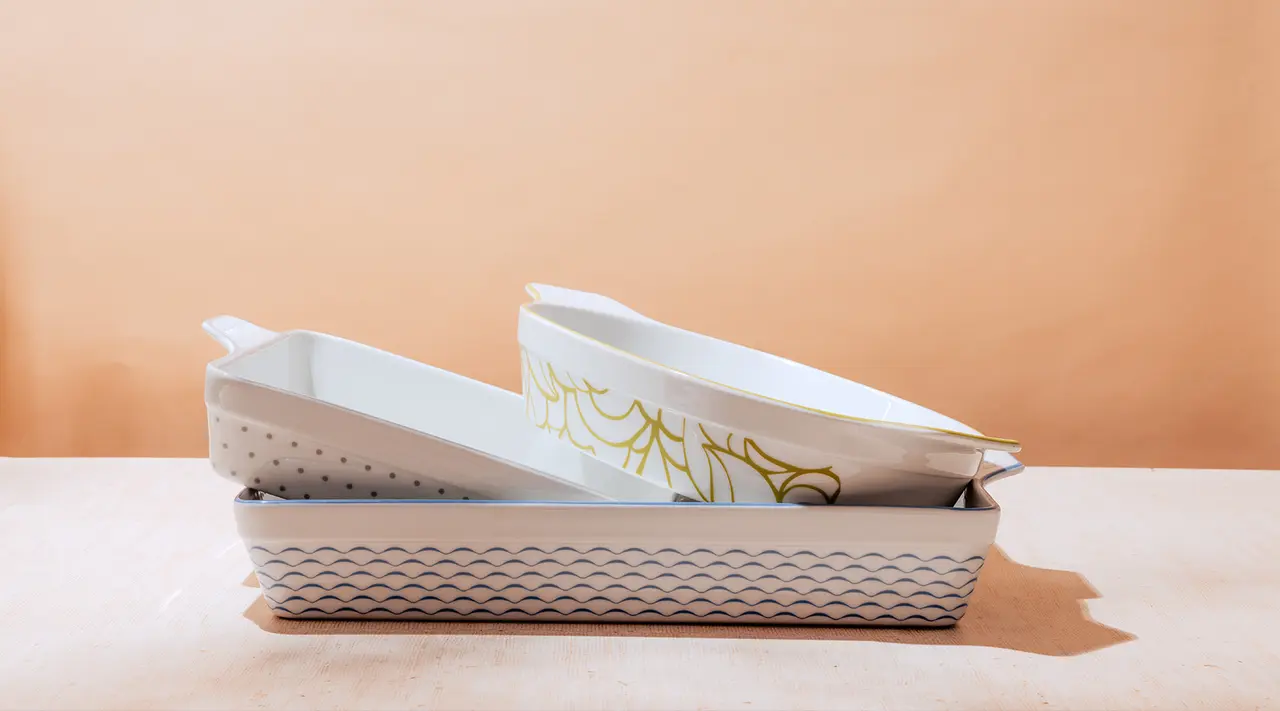
A small assortment of bakeware and a sheet pan will cover approximately 90% of your baking endeavors, which is why we tout them as our essentials. It’s also why we recommend beginning here and then growing your collection to include other specialty baking pans.
8x8” Square Baking Dish
Almost any dessert that comes in bar form will be made in a 2.6 QT, 8x8 baking dish. It’s the perfect size for 2-4 people who want leftovers, or to share with anywhere from 9 to 16 guests (depending on how stingy you’re prepared to be).
This size is used most for desserts like brownies, blondies, shortbread, tiramisu, crispy rice treats, coffee cake, and bread pudding, but theoretically it could be used in a savory context as well for cornbread or a small focaccia.
Quick Conversions: The 8x8” Baking Dish can substitute as a 9” round cake pan, a 9x5 loaf pan, or a deep-dish Pie Dish. Halved recipes intended for 9x13 rectangular baking dishes are also compatible.
9x13” Rectangular Baking Dish
Almost exactly double the volume of the 8x8, the 5.3 QT capacity 9x13 rectangular baking dish is more commonly deployed for savory dishes like stuffing, big batch desserts like peach cobbler and blueberry pound cake, or sticky buns. Its larger size is helpful for meal prepping, batch cooking, dinner parties, and any bake sales you may be roped into.
Quick Conversions: The 9x13” Baking Dish fits doubled recipes intended for 8” square baking pans, 8” round cake pans, and 9” round cake pans. Recipes should require no scaling.
Oval Baking Dish
At 2.4 QT capacity, the oval baking dish has a lot of overlap with the 8x8, but its unique silhouette somehow feels more spacious. Often called a “gratin dish,” it’s more common on French tables—and (in our opinion) looks the most elegant of the three. It lends itself to savory dishes like mac and cheese, eggplant parmesan, lasagna, or anything else involving baked vegetables, cheese, and pasta. But it’s also happy in a sweet setting—if you were going to make a clafoutis, this is the pan to do it in.
All three pieces of our Porcelain Bakeware Set are crafted from a 202-year-old recipe in France, and offer a thermal shock-resistant and naturally non stick baking surface. And while each of these standard baking pan sizes is available in a variety of materials, we find baking with porcelain is a bit more forgiving and often yields better results.
18x13” Half Sheet Pan
Even if the only thing sheet pans had going for them was chocolate chip cookies, that would be enough. But sheet pans are the most versatile role players of bakeware, ranging in utility from grunt work (like toasting nuts and catching glaze under a cooling rack) to the more high stakes operations (ensuring perfectly baked bars, sheet cakes, and loaves of bread).
Our Sheet Pan was designed with award-winning pitmaster and Chef Matt Horn. Its aluminum construction optimizes heat conduction and minimizes carryover cooking, while a sturdy rim acts as a levee against juices escaping. In addition to being one of the most versatile, the Sheet Pan is also one of the highest value baking tools—we recommend getting at least 2.
Specialty Bakeware That’s Actually Worth It
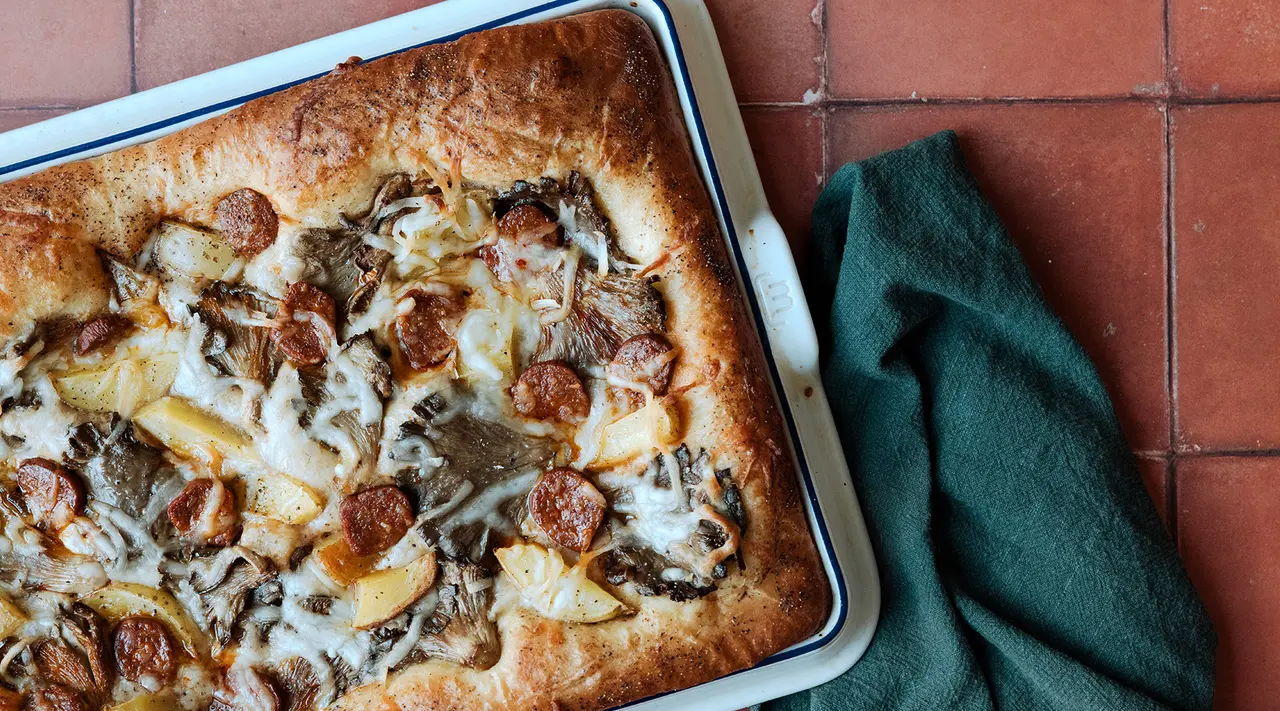
The above will have most of your potluck needs and late-night cravings covered, but there are several honorable mentions for bakeware (and bakeware-adjacent tools) that are probably worth investing in to varying degrees.
Some can be purchased cheaply from a grocery store or big box outfitter, while others should be selected with care—let’s break it down.
Dutch Oven
Dutch ovens are undeniably essential, but are they essential for baking specifically? Depends on the baker. Bread bakers swear by Dutch ovens for their ability to recreate the effect of commercial steam ovens, and they’re our go-to for any homemade deep-fried things (especially if it’s apple cider donuts).
It’s only because Dutch ovens aren’t technically classified as "bakeware "that they’re not included in the essential category. Our Dutch Oven is crafted and hand-enameled in northern France, home to the best cast iron cookware for centuries.
Round Cake Pans
Round cake pans come in a range of sizes, but recipes will most commonly call for 6”, 8”, or 9”. While a recipe for a 9” round cake pan will bake up perfectly in the 8x8 Baking Dish, other conversions are slightly trickier. Scroll down to the section on converting between baking pan sizes for more.
(Deep Dish) Pie Dish
Pie isn’t something most people make frequently, but it’s basically required on the 4th of July and Thanksgiving. It’s also one of the easiest bakes to get wrong, and the most disappointing when it doesn’t turn out—nobody wants a soggy bottom or unset filling on their pumpkin pie cheesecake, custard pie, or (God forbid) the holiday apple pie.
More so than the loaf pan or cake tins, a beautiful and high-performance pie dish is worth investing in to ensure perfect baking and elegant serving, especially if you’re trusted with your great-grandmother's pie recipe every holiday.
Quick Conversions: Recipes designed for the Baking Slab can be halved for the Pie Dish, or it can be substituted 1:1 with an 8x8 Baking Dish.
Loaf Pans
Despite banana bread’s near universal appeal, there seems to be the most variability in loaf pan sizing. The standard is around 9x5, but you’ll also find 8x4, 10x5, and various other iterations. Loaf pans from the grocery store tend to stick closer to 9x5, and feature curved, sloping edges.
For a more polished final look with better (i.e. not squat) proportions, go with an 8.5x4.5” loaf pan that has straight edges and right corners. This is exclusively the opinion of the author, who is willing to die on this hill. Many pans were tested to come to this (correct) conclusion.
Cupcake (or Muffin) Tin
Most cupcake (or muffin) recipes can be successfully baked as snacking cakes in an 8x8 or 9x13 pan, depending on the volume of the batter. But if you’re participating in a bake sale, a cupcake tin comes in handy. The same goes for muffins, pasteis de nata, mini quiches, and all manner of handheld treats.
Baking Slab
Possibly the most niche bakeware in existence, the Baking Slab is a new kind of tool that we designed according to Chef Nancy Silverton’s exacting requirements. The proliferation of slab pies over the last few years made it increasingly necessary to have a tool created specifically for the job—making slab pie isn’t hard, as long as you’ve got the right setup. Chefs and home bakers love ours for recipes of all kinds, including focaccia, sweet and savory tarts, and most recently a bourbon pecan slab pie.
Quick Conversions: Recipes designed for the Baking Slab can be made in a Half Sheet Pan, though baking times will be longer. Determine doneness by visual cues (like a golden-brown crust) rather than what’s written in the instructions. To convert a 9” pie recipe for a crowd, double it and make it in the Baking Slab.
Ready to Bake?
Now that you have an encyclopedic knowledge of the various shapes, sizes, and styles of bakeware, you’re ready to impress at your next potluck, dinner party, or mid-day baking session. No matter what you're doing it for, it's better to do so with beautiful, legacy Bakeware made according to historic and artisanal traditions—but that’s your call.
